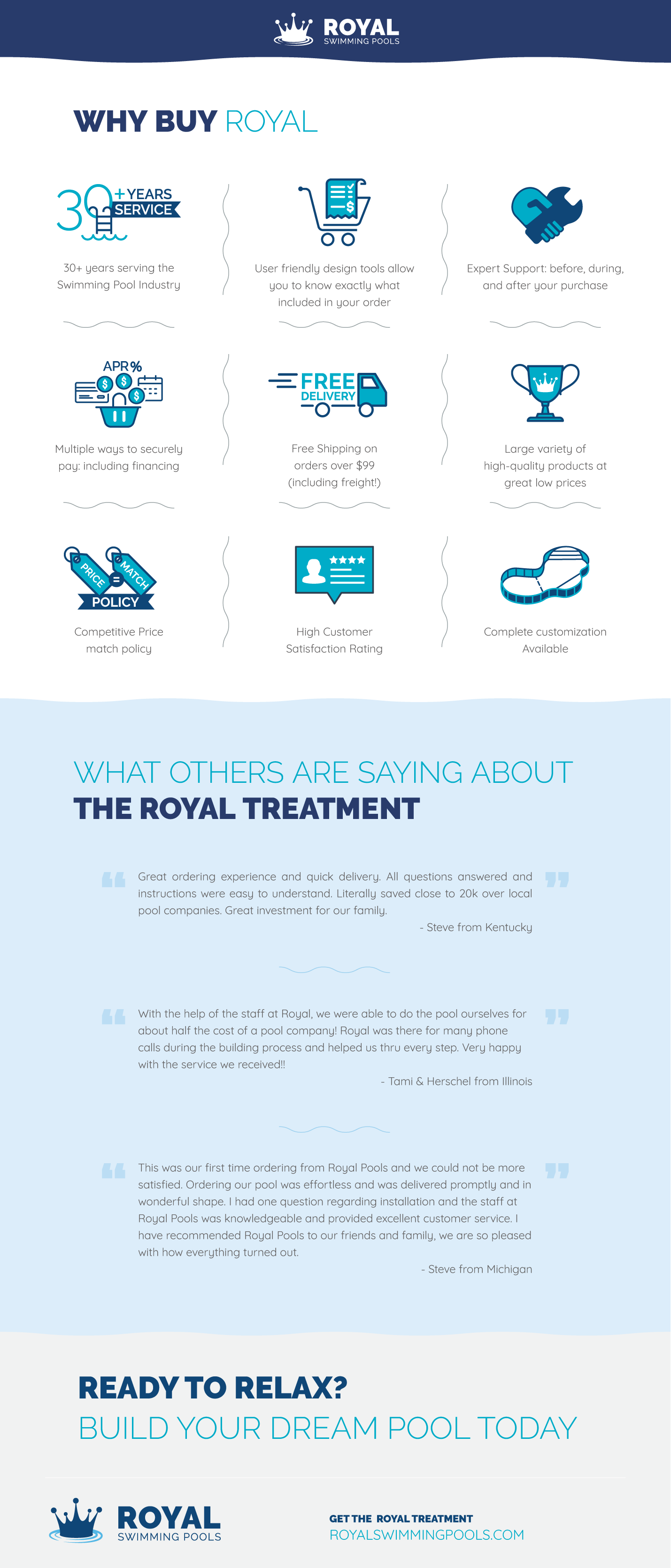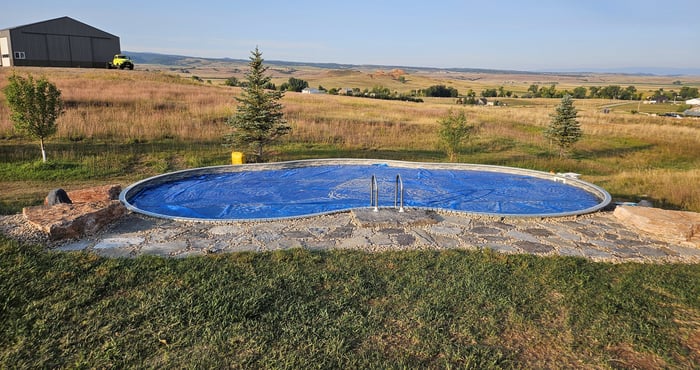What is the Most Durable Swimming Pool Finish? An Expert Look
Choosing the right pool finish is more than a design decision—it determines how long your investment will look good, how often you’ll need to resurface, and how much you’ll spend on chemicals and upkeep. The wrong finish might require expensive repairs in just a few seasons, while the most durable pool finish can stretch maintenance cycles for decades. Below, we compare today’s leading pool finish options—from classic plaster to pebble aggregates—to help new pool buyers and renovation-minded owners decide confidently.
What Makes a Pool Finish Durable?
A “durable” pool finish is one that can shrug off years of sun, chemicals, and changing water levels without turning rough, chalky, or dull. In practical terms, durability decides how soon you’ll need to resurface—and whether the best pool surface material truly delivers on its promise of longevity.
When homeowners ask, “What type of pool lasts the longest?” these are the pressure points we suggest you evaluate:
- Chemical resistance: Chlorine, salt, and occasional acid washes can leach binders from softer finishes; harder aggregates and properly cured cementitious mixes hold up far longer.
- UV stability: Intense sunlight breaks down pigments and polymers. Finishes with UV-stable quartz, ceramic pigments, or glass beads keep their color instead of bleaching out.
- Structural strength: Shrinkage, micro-cracking, and poor bond to the gunite shell invite early failure. High-compressive-strength mixtures and proper curing guard against it.
- Texture integrity: When binders erode, rough aggregate pokes through. Dense surfaces—or those protected by polished or pebble layers—stay smoother, safer, and easier to clean.
- Color retention: Consistent mineral content and quality pigments prevent mottling or ghost spots, keeping the pool’s appearance uniform over time.
- Environmental resilience: Freeze-thaw swings, heavy rainfall, and high calcium hardness can all attack the surface. Finishes formulated for the local climate weather these stresses best.
Overview of Popular Pool Finish Options
At Royal Swimming Pools, we’ve spent more than three decades helping homeowners match finish choices to climate, bather load, and design goals. Below are the six surfaces we guide clients through most often:
- Standard plaster: A smooth blend of white or pigmented marble dust and cement. It delivers the lowest upfront cost but also the shortest service life, so budget for a re-coat roughly every decade.

- Quartz aggregate (e.g., Diamond Brite): Traditional plaster reinforced with crushed quartz crystals. The harder aggregate boosts stain and chemical resistance while adding speckled color at a mid-range price point.

- Pebble aggregate (e.g., Pebble Tec): Natural river pebbles embedded in cement, then lightly exposed for a textured, organic look. It commands a premium price but can outlast most other cementitious finishes by a decade or more.

- Polished marble (e.g., Hydrazzo): Marble and quartz aggregate troweled on and machine-polished to a silky surface that feels almost like tile. Expect a luxe appearance, moderate-to-high cost, and solid longevity when water chemistry is well managed.

- Tile (ceramic, porcelain, glass): Individual tiles adhered over the pool shell and grouted in. While the upfront investment is the highest, properly installed tile can remain serviceable for multiple decades with only periodic grout maintenance.

- Epoxy or rubber paint: A roll- or spray-on coating used to refresh aging shells quickly. It’s the most budget-friendly route but also the shortest-lived, typically lasting just a few seasons before another coat—or a full resurfacing—is needed.

Diamond Brite: Pros, Cons & Lifespan
Diamond Brite is a quartz-aggregate finish that swaps soft marble dust for much harder quartz crystals. The added hardness helps the surface shrug off stains and etching, while the quartz chips create a speckled shimmer that stays true even under aggressive sunlight.
Key points
- Typical lifespan: 10–15 years when water chemistry stays on target.
- Texture: Slightly rougher than plaster yet noticeably smoother than full pebble.
- Color options: A broad palette, including vivid blues, teals, and contemporary grays.
Pros
- Better stain resistance: Dense quartz chips shield the binder from metals and algae.
- Color retention: UV-stable quartz minimizes fading and mottling.
- Mid-range cost: Roughly $6–$8 per sq ft installed—more than plaster, less than pebble.
Cons
- Routine acid wash: Expect a light acid wash about every five years to restore sparkle.
- Moderate roughness: May irritate very sensitive feet compared with polished finishes.
Care tips
- Maintain pH 7.2–7.6: Keeps binders from dissolving and preserves sheen.
- Brush twice weekly (first 30 days): Prevents early mottling while the surface cures.
Pebble Tec: Pros, Cons & Lifespan
Pebble Tec is a premium exposed-aggregate finish made by mixing polished river pebbles into a polymer-modified cement base, then acid-washing the surface to reveal the stones. The pebbles form a hard, natural armor that resists staining and hides dirt, while dozens of blend options—earthy tans, deep lagoon blues, even glass-bead sparkles—let designers echo surrounding hardscape or waterline tile.
Key points
- Lifespan: 20 – 30 years with balanced chemistry—often the go-to answer for “most durable pool finish.”
- Texture: Pronounced, slip-resistant; “mini-pebble” and “pebble sheen” variants feel noticeably smoother.
- Appearance: From muted river-rock palettes to vivid jewel tones; mottling and leaf stains stay well-camouflaged.
Pros
- Exceptional durability: The pebble layer shields the cement matrix from etching and UV damage.
- Low chemical demand: Stable surface alkalinity means fewer pH corrections and less calcium scale.
- High resale appeal: Luxury buyers often recognize the Pebble Tec brand and value its long service life.
Cons
- Premium cost: Expect about $9 – $12 per sq ft installed, higher than quartz, lower than all-tile interiors.
- Coarser feel: Standard pebble can snag delicate swimsuits and is less toddler-friendly than polished options.
Care tips
- Quarterly phosphate check: Keeps algae from settling in pebble crevices.
- Saltwater safe: Pebble resists the salt-line etching that can plague plaster and quartz finishes.
Hydrazzo: Pros, Cons & Lifespan
Hydrazzo is a polished marble-aggregate finish. Crews trowel the mix onto the shell, allow it to hydrate, then diamond-polish it underwater to reveal a glassy, boutique-hotel sheen. The polishing closes micro-pores, yielding the smoothest feel of any cementitious surface while still offering respectable hardness and stain resistance.
Key points
- Lifespan: 15 – 20 years when water chemistry is kept in balance.
- Texture: Ultra-smooth—closest to fine plaster but denser and less porous.
- Aesthetic: Deep, gem-like colors with virtually no mottling.
Pros
- Smoothest feel among cement finishes that is gentle on skin and swimwear.
- Reduced algae adhesion because polishing removes micro-pores.
- Mid-tier pricing: typically falls between quartz and pebble in most markets.
Cons
- Craftsmanship sensitive: An uneven initial polish can leave burn rings or dull spots.
- Periodic re-polishing every 8–10 years is recommended to restore mirror-like luster.
Care tips
- Maintain calcium hardness 200–400 ppm to prevent leaching stains.
- Brush weekly: a slick surface still benefits from light agitation to deter scale.
Pool Finish Comparison Chart
| Finish Type | Expected Lifespan | Texture | Visual Style | Installed Cost* | Maintenance Level |
| Standard plaster | 7-10 Years | Very smooth | Classic, bright | $5/sqft | High (acid-wash, frequent chemistry tweaks) |
| Quartz (Diamond Brite) | 10-15 Years | Smooth-medium | Speckled, UV-true | $6-8/sqft | Moderate |
| Pebble aggregate (Pebble Tec) | 20-30 Years | Textured | Natural stone palette | $9-12/sqft | Low |
| Polished marble (Hydrazzo) | 15-20 Years | Silky smooth | Rich, glassy colors | $8-11/sqft | Moderate |
| Tile (porcelain/glass) | 30+ Years | Smooth grout lines | Infinite patterns | $30-40/sqft | Low-Moderate |
| Epoxy/rubber paint | 3-5 Years | Very smooth | Limited colors | $1-2/sqft | Very High (recoat often) |
*This is an estimate. Actual costs may vary.
Want to learn more? Read our detailed breakdown in Vinyl Pools vs. Fiberglass Pools vs. Concrete Pools.
Best Pool Surface for Longevity & Aesthetics
Picking the “right” finish is always a balance of how long you plan to own the pool, the look you want, and how much maintenance you’re willing to do. Below is a quick, ranked snapshot—starting with the longest-lasting, most design-flexible surface and working down to the quickest stop-gap.
- Tile: Service life can exceed 30 years when properly installed and grouted, and the styling options are virtually limitless—from hand-cut mosaics to mirrored glass. Expect the highest upfront cost but the lowest likelihood of having to resurface again during the pool’s lifetime.
- Pebble Tec: A “set-it-and-forget-it” finish that routinely delivers 20 years or more of use with minimal chemical fuss. Its textured, natural look pairs well with contemporary landscapes and commands strong resale value.
- Hydrazzo: Offers hotel-grade smoothness and rich, gem-tone colors while still lasting 15–20 years. A smart middle ground if you want luxury aesthetics without the tile price tag.
- Diamond Brite (Quartz): Strikes a solid balance between durability and budget. With good water chemistry, the quartz blend should look sharp for a decade or more before any touch-up is needed.
- Standard plaster: The classic white or colored marble-dust surface remains the go-to for budget builds, but plan on a full resurface in about ten years—sooner if water chemistry drifts.
- Epoxy paint: Best viewed as a cosmetic Band-Aid, epoxy paint freshens an aging pool quickly and cheaply but typically needs a new coat every three to five seasons.
Maintenance Tips for Lasting Finishes
- Balance water weekly: Test pH, total alkalinity, calcium hardness, and sanitizer levels every seven days and adjust promptly to keep the finish from leaching or scaling.
- Brush consistently: Give walls and steps a light brush once a week—yes, even textured pebble and slick tile—to knock off developing biofilm and calcium nodules.
- Control metals: Add a quality sequestrant after heavy rain or when topping off with well water to bind copper and iron before they can leave stubborn surface stains.
- Schedule acid washes carefully: Use a mild, diluted solution and follow manufacturer guidance. Overly aggressive or frequent acid washing can shave years off plaster and quartz finishes.
- Inspect annually: Walk the pool each spring for hairline cracks, popped pebbles, or missing grout. Small repairs handled early prevent moisture intrusion and bigger structural issues later.
Most Durable Pool Finishes - FAQs
Which pool finish lasts the longest?
- Tile interiors and premium exposed-pebble systems can exceed 20+ years when they’re installed by certified crews and the water chemistry stays balanced.
What is the smoothest pool finish?
- Hydrazzo and related polished marble aggregates deliver a glass-like feel that’s gentler on skin than any other cementitious option.
What pool finish is best for saltwater pools?
- Quartz and pebble blends stand up well to salt systems, while tile is almost impervious—just monitor grout lines to prevent softening or discoloration.
How do I know when my pool finish needs to be replaced?
- Rising chemical demand, rough or chalky patches, spalling, and blotchy color all signal that the surface binder is failing and a resurface is due.
Can I resurface my pool myself?
- Small epoxy-paint touch-ups are DIY-friendly, but full quartz, pebble, or polished marble installations require specialized crews, heavy equipment, and precise cure schedules. Professional work ensures both warranty coverage and a long-lasting result.
Additional resources for your pool buying journey:
- How much does it cost to install an inground pool
- What to know when buying an inground pool
- Build Your Own Pool & Save
- Vinyl VS. Fiberglass VS. Concrete: Pros, Cons, and More!
- Inground Pool Buying Guide




.jpg?width=700&name=Royal%20Swimming%20Pools%20INstallatin%20Team%20(9).jpg)

